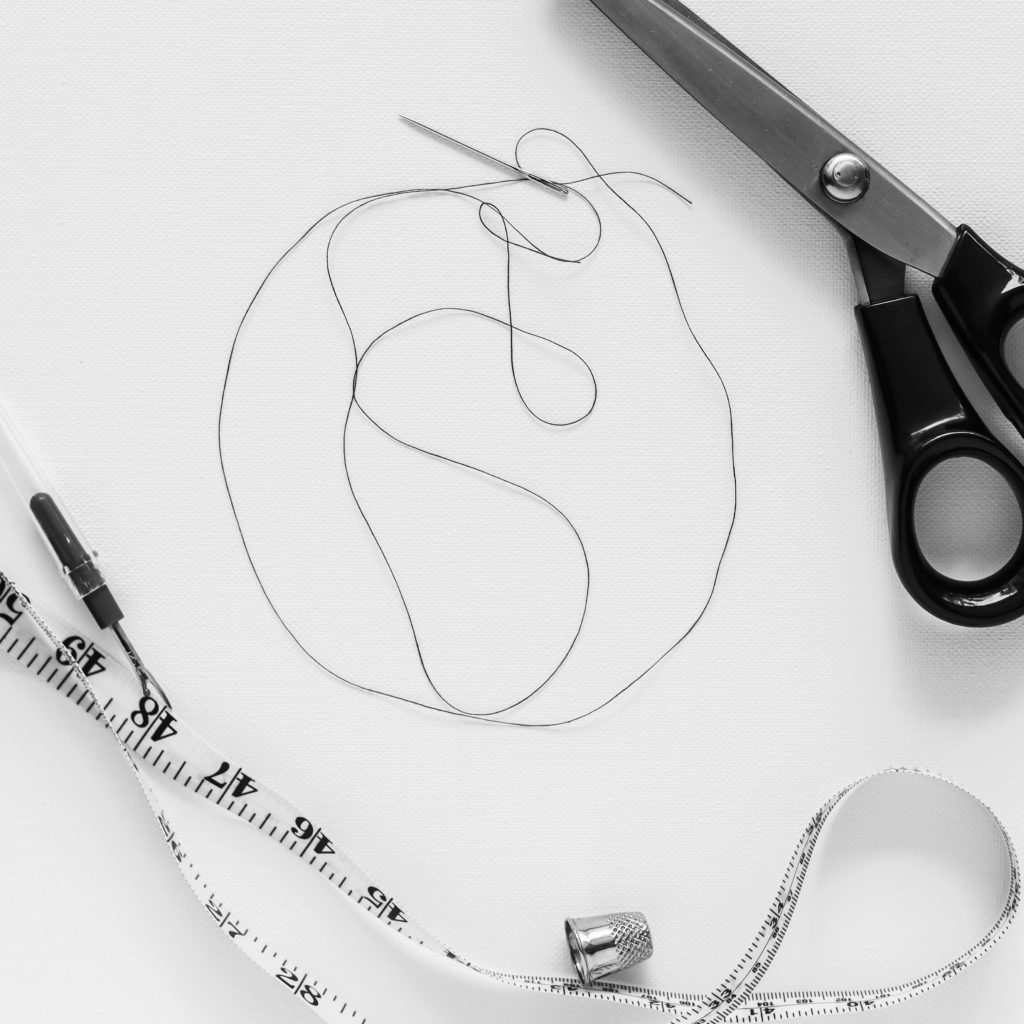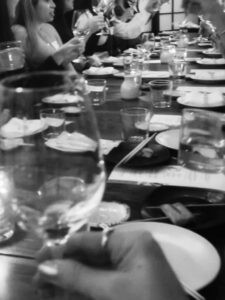Behind the gilded curtain of our beloved fashion industry are some harsh truths we don’t see at first.
It can be hard to wrap your head around something you don’t have exposure to directly. The shiny window displays of a retail store (or aesthetically-pleasing website) where we first meet fashion are a far cry from the graveyard of its exit. It is in this juxtaposition of how fashion is marketed and sold, to how it is frequently disposed, that we consumers are most appalled— or should be.
Clothing. An old tire. Pizza crust. What do these random items have in common? They end up in landfills. The former of which, at such staggering rates… I had to read them twice. Yes, this is the very literal graveyard of where most fashion items go to die: the dump.
- in less than 20 years, the volume of clothing thrown away by Americans each year has doubled
- 13 million tons of clothing and shoes were generated as waste in 2018
- globally, fashion is responsible for 92 million tons of solid waste per year
- it can take up to 200+ years for textiles to decompose in landfills
Dig a little deeper into the discarded rubbish and we find that fashion is a high-polluting industry beyond end-of-life waste. It goes all the way up the chain, starting with the production process itself. According to the 2021 Insight Report of the World Economic Forum, fashion is the third largest contributor to global greenhouse gas emissions, after food and construction. In some ways, it makes sense that after the meals we consume and the buildings we inhabit, it’s the clothing on our backs that take the biggest toll on our environment. But to what end, and why does it have to be a toll taken in the first place? For example, over 8000 synthetic chemicals are used in the clothing manufacturing process. Really? Why is this necessary? From a consumer perspective, we are often blind to what really happens behind the scenes before we “add to cart” or swipe the shiny thing off its hanger and into our lives.
Do you remember the film, “The True Cost?” This was my first wakeup call that all that glitters is not gold in the world of fashion. If you haven’t seen it, do give it a watch and prepare to be educated, dismayed and hopefully empowered with the truth. The 2015 documentary exposes the dark realities of this multi-billion dollar industry and gives an inside look at who really pays the price for fashion. What’s most enlightening is the direct human and environmental impact fashion has, for better or for worse. Six years later, what progress have we truly made as a conscious collective, companies and consumers? If clothing continues to end up in landfills, if it is produced in the same ways… we are left with unimaginable amounts of waste and pollution, year over year. No one has a crystal ball, but we can be certain that walking down this road, the results are exponentially detrimental.
Closing the Loop: Linear to Circular Process
To truly upend the system, we must connect the missing link, from start to finish. Case in point: fashion as a circular economic system. What does that mean? Circular systems consider the before and after of a process. According to the Ellen MacArthur Foundation established to educate and foster change, the typical linear model most widely used by the industry is built on “take-make-dispose”. Neither the sourcing nor the end use are considered here, it is purely the sale that takes precedence over the other steps of the process. The result: an unsustainable amount of waste entering the environment once a product is no longer of value.
On the opposite end of the spectrum, the circular fashion system is intentionally created to be restorative and regenerative, not unlike the natural lifecycle of all living beings. Each step in the process is considered with the next in mind so the product is sourced from the earth and ultimately returned to the earth, to become earth. This cycle can sustain itself when repeated over and over, hence, “sustainability.” Idealistic? Yes. Possible? Yes, and growing evermore with technology, education and awareness.
How can this realistically happen? By “we must connect the missing link”, I mean us consumers and companies alike. The circular fashion system is dependent on both companies’ consideration of the product life cycle as much as our consumer actions. We hold the power too. Our money spent is our voice, speaking loud and clear from our pockets to their paychecks.
The Solution: Upcycling
As demand for eco-conscious fashion rises, there is a certain ‘new luxury’ that is emerging from the intersection of minimalism and sustainability. Green options are becoming more widely available at all price-points, but the most pure practices can come with a bit of a price tag. In support of the circular fashion system is the practice of upcycling, or creating “a product of a higher value than the original item.” In terms of fashion, this can include giving a new life to fabrics from pre-existing garments, utilizing deadstock or unused vintage fabrics, or converting recycled materials into fabric. The invention and intention here gives a whole new meaning to making a piece of clothing. Labor-intensive upcycled materials such as ECONYL® from ocean waste, RPET from recycled plastic and the sourcing of highly sought after deadstock fabrics from decades past, typically mean more capital required to cover costs. Additionally, many eco-conscious brands are committed to ethical production models to support the people behind the making of the product. So when you decide to add an upcycled garment to your closet, it is truly more than the fabric itself that you are buying into. It’s the stories of the hands and lives who have touched it, the intentional decisions behind its design and the responsibility to the planet we live on, for however long she can sustain us.
Want to get started on curating your eco-wardrobe?
Choose to buy from brands that utilize upcycled fabrics, closed-loop production models and implement the cradle to cradle model, or an item take-back program to responsibly handle their goods from start to finish.
The R Collective
Here’s a brand that was truly born out of a need to see a change in the industry. R Collective was established after founder Christina Dean rode through Hong Kong’s expansive manufacturing district on a charity-sponsored bike ride event. She witnessed the reality of how textiles are produced and the waste that accumulated— and took action.
How is it sustainable?
By reusing, repurposing and recycling luxury textiles from top fashion brands around the globe, R Collective’s goal is to create a circular fashion system to reduce waste and pollution. Even fabrics that can’t be reused go through a fibre recovery system to turn them into fabrics. With a modern and minimal aesthetic, these pieces are great for adding to a capsule wardrobe for work or weekend.
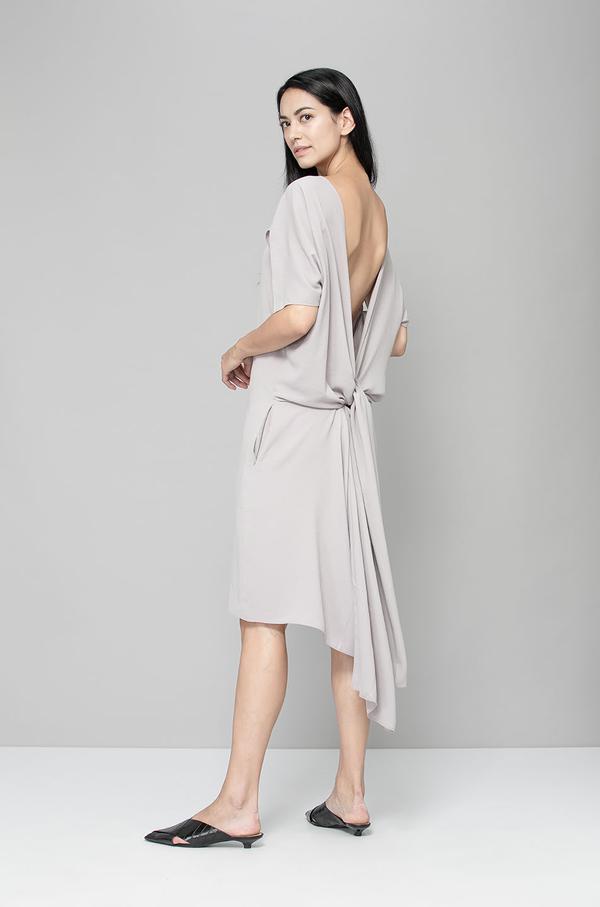
Made from silky-smooth upcycled Japanese satin, the Calabash Dress is guaranteed to work overtime in your closet. Talk about cost per wear! The reversible neckline and adjustable ties mean multiple ways to style this stunner, from a low back to a low front. Want to wear it to work? A high-neck fitted tank underneath will create a layered look that adds interest. The relaxed elegance of the silhouette calls for a sleek white sneaker for day and little kitten heel or chunky mule for night, as you wish.
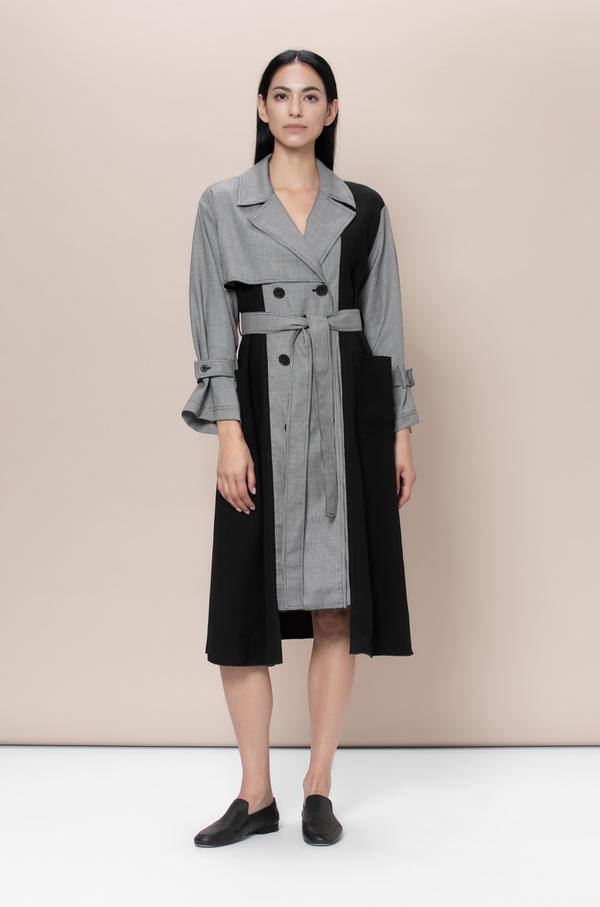
The Dalston Trench is a modern twist on a British classic. Crafted from upcycled luxury excess fabrics, the cut and contrast of the solid black crepe against the grey houndstooth makes this coat a unique find. Let the piece standout by wearing it over a classic white tee and jeans with loafers. To take it up a notch, pair with a jewel tone top and sleek black pants. Add a little shine with a silver ballet flat and you’re set.
Wolven
Looking for unique workout gear or loungewear? Look no further than Wolven. Kiran Jade, founder and CEO of Hindu Indian-Pakistani Muslim heritage, grew up going to textile markets with her mom to have traditional eastern clothing made. This sparked an appreciation of well-fitting garments and a celebration of the differences she was born from. Post art school, she and her partner Will Ryan set out to create a brand that is “a home for everyone to feel confident and empowered, while respecting the planet”. Each product starts out as a canvas. Inspiration is drawn from nature or cultural traditions such as henna, as seen in the gorgeous printed pieces.
How is it sustainable?
Wolven seeks to “Make Sustainability Sexy” with each step of their process. To offset the emissions created by production, the brand has partnered with Climate Pledge. Balancing the carbon footprint with rainforest conservation and landfill methane-capture projects has earned Wolven its carbon-neutral status. And how are their fabrics so soft!? Each pair of leggings are made from 27 post-consumer bottles turned into OEKO-Tex Certified recycled PET fabric. Breathable, durable, sustainable!
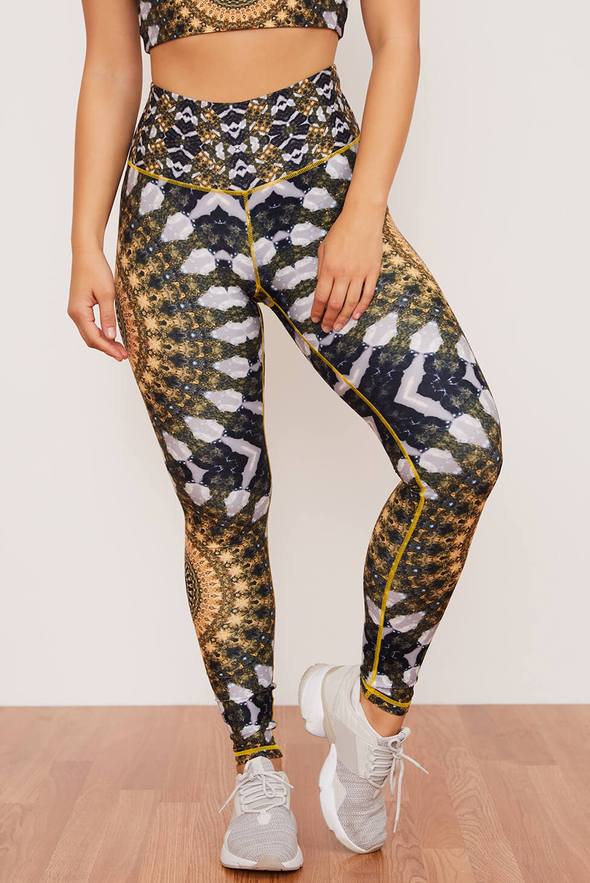
With a vibrant mandala print, the Noor leggings make a statement for working out, going out and everything in between. The flattering high-rise cut and back zip pocket mean not having to sacrifice comfort and functionality for style. To make a matching set, pair with one of the sports bras, like the Noor Four-Way Reversible top for maximum options. Wear with a classic oversized white button-down and black mules to dress it up.
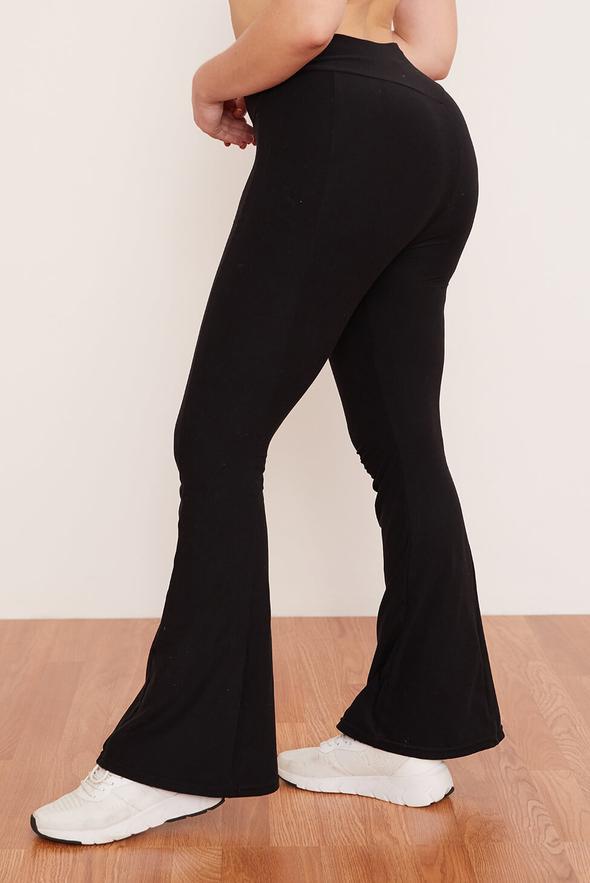
Want a pair of comfy, flattering pants that can truly do it all? Meet the Onyx Bell Bottoms. With a little kick-flare, these babies are a versatile choice for downward dog, desk or dinner. They also come in both petite and regular length to get that perfect fit. Not ready to wear “real pants” yet and prefer a sleek and stretchy alternative? Pair the Onyx pants with a tee and blazer for some refinement. To continue the relaxed tailoring vibe, finish it off with sneakers, or add low heels for an elevated take.
Fashion waste does not need to meet its end six feet under.
Upcycling garments and waste into innovative and highly functional items is both a restorative process for the earth and a feasible model for business, with more brands following suit now more than ever. And that, dear readers, is the beginning of revival.
Alexandra is a Magna Cum Laude graduate of Savannah College of Art and Design with a Bachelor of Fine Arts in fashion design. Her senior thesis collection of hand-sewn garments was chosen to be showcased at the SCAD Fashion Show in 2018. As a trend forecaster, stylist, writer and artist, she enjoys many vantage points from which to understand and contribute to the industry. With an intrinsic desire to pursue the purpose and meaning behind design and beyond, she is guided by this phrase: Think with dimension, Create with invention, Live with intention
main photo credit: Viet Hwang, @veryviet
all opinions are our own; no free products or compensation were received from manufacturers for these mentions.
Do you have any follow up questions or comments? Or do you have your own favorite sustainable fashion recommendations to share? Please send an email to feedback@futurelynn.com. Would love to hear from you. 🖤

